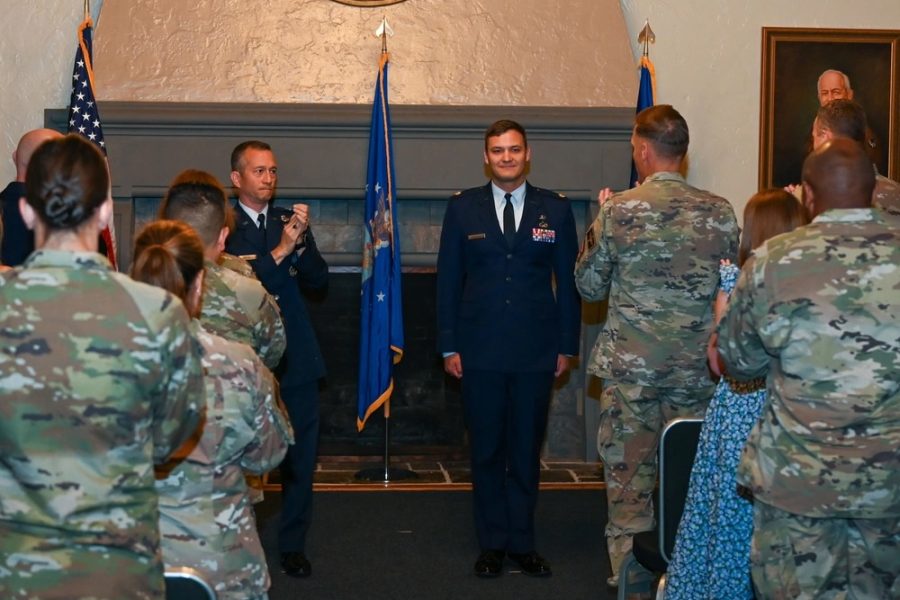The Air Force took a step closer to bringing new warrant officers into its ranks for the first time since 1958 by opening a school where Airmen will train for the role.
The Air Force Warrant Officer Training School was activated in a ceremony at Maxwell Air Force Base, Ala., on June 28. The school curriculum will focus on five warrant officer foundational principles: communicate, advise, influence, innovate, and integrate, according to a press release.
The Air Force and Space Force are the only military services currently without warrant officers, who fill technical rather than leadership functions in the other military branches. But today the Air Force sees the reintroduction of warrant officers as a way to maintain an edge in two fast-moving technical fields: information technology and cybersecurity.
“We are in the business of producing Airmen,” Maj. Nathaniel Roesler, the new WOTS commandant, said in the release. “These specialists come to us with technical expertise, and our mission is to develop them to be better warfighters, advisors, and integrators, ready to fly, fight, and win during Great Power Competition.”
In the enlisted and commissioned officer ranks, Airmen often have to take career breaks for leadership and development roles as they rise through the ranks. The warrant officer track offers a different path.
“With perishable skills, like cyber, like IT, where the technology is moving so rapidly, folks who are experts in that can’t afford to be sent off to a leadership course for eight or nine months,” Alex Wagner, assistant secretary of the Air Force for manpower and reserve affairs, said April 9.
Time spent in mandatory leadership roles can also hurt retention; Air Force Secretary Frank Kendall said in February that about 100 Airmen joined other branches in recent years so that they could become warrant officers in IT and cyber.
The first eight-week WOTS class of about 30 candidates is scheduled to start this October and graduate in December, with a second class of about the same size scheduled to start in early 2025.
Competition for a warrant officer slot is proving to be fierce: when the Air Force opened applications for the program from April 25 to May 31, more than 350 Active-duty Airmen sent in packages, of whom about 50 were turned away due to incomplete applications, Air Force officials told Air & Space Forces Magazine.
Active-Duty Air Force Warrant Officer Applicants by Age
| 20-25 | 26-29 | 30-34 | 35-39 | 40+ |
| 12 | 63 | 110 | 99 | 17 |
Active-Duty Air Force Warrant Officer Applicants by Gender
| Male | Female |
| 277 | 24 |
Active-Duty Air Force Warrant Officer Applicants by Rank
| E5 | E6 | E7 | E8 |
| 73 | 132 | 93 | 3 |
The 301 Active-duty applicants that met the board to become warrant officers came from a range of career fields including cyber defense and cyber warfare, intelligence analysis, cryptologic language analysis, aerospace ground equipment specialists, health services management, mental health services, special investigations, and military training instructors. Members of the Air National Guard and Air Force Reserve could also apply, though data on those applicants was not immediately available.
Applicants had to be at the rank of staff sergeant and above, at the age of 42 or younger, and with a minimum five years’ time in service by July 24. Though applicants could come from any career field, they had to meet a range of qualifications in cybersecurity and information technology.
The selection board met from June 24-28, and selectees will be notified in late July. Upon graduating, the new warrant officers will be assigned to units supporting both the Air Force and joint force operational requirements, according to the press release. Future classes will be announced each year.
It is unclear at this point how many warrant officers the Air Force hopes to train, but planning documents obtained by Air & Space Forces Magazine in February show that the pipeline could scale up to 200 junior warrant officers and 50 senior warrant officers per year. Kendall said in March that he expects the program will eventually expand to other career fields, pending how successful it is in cyber and IT.
“The reintroduction of warrant officers to the Air Force is another example of the force adapting personnel policies to best compete in emerging security landscapes.” Brig. Gen. Houston R. Cantwell, commander of the Jeanne M. Holm Center for Officer Accessions and Citizen Development, said in the press release.
“The warrant officer will serve on the virtual frontlines, allowing us to stay ahead of rapidly advancing threats while safeguarding national security interests in both the information technology and cyber career fields.”


